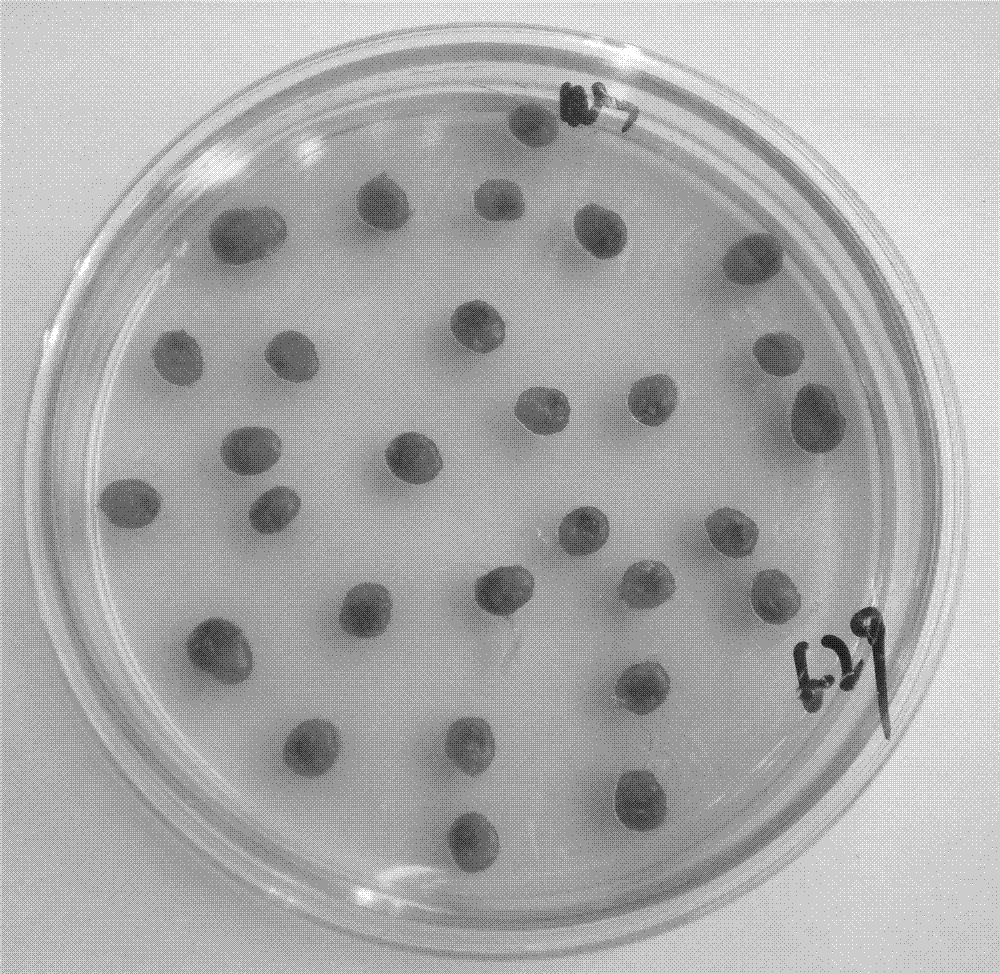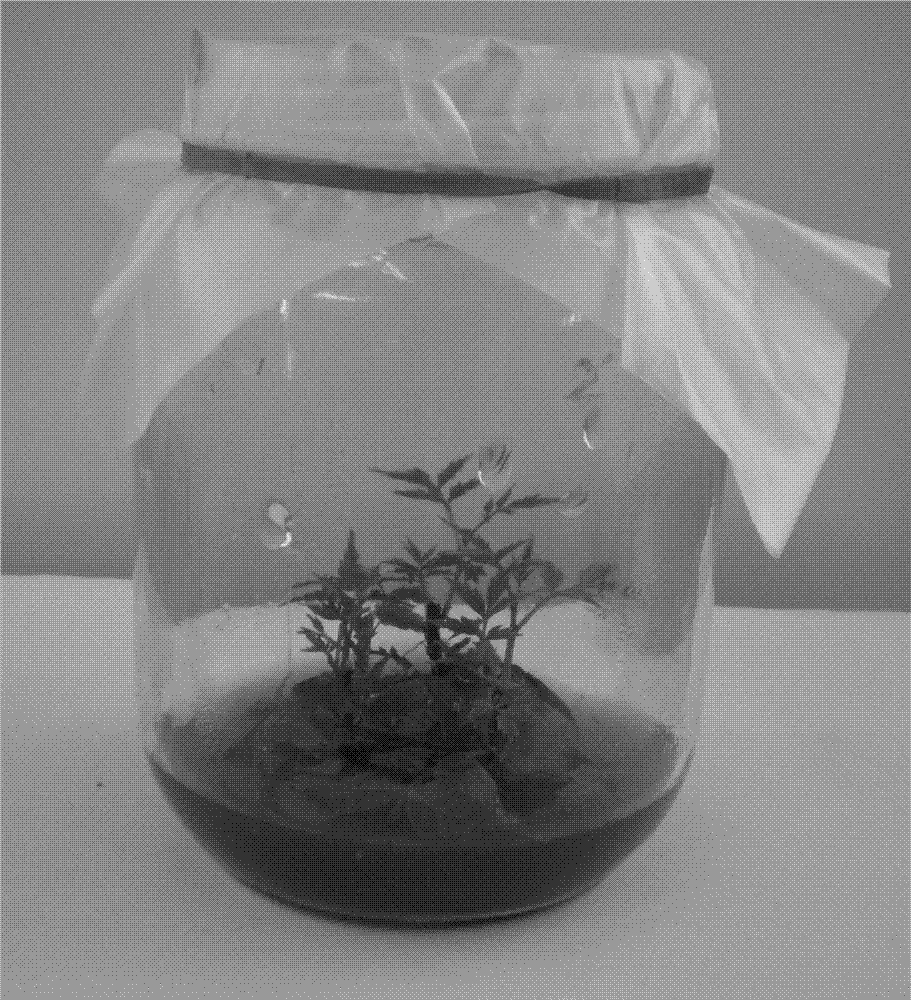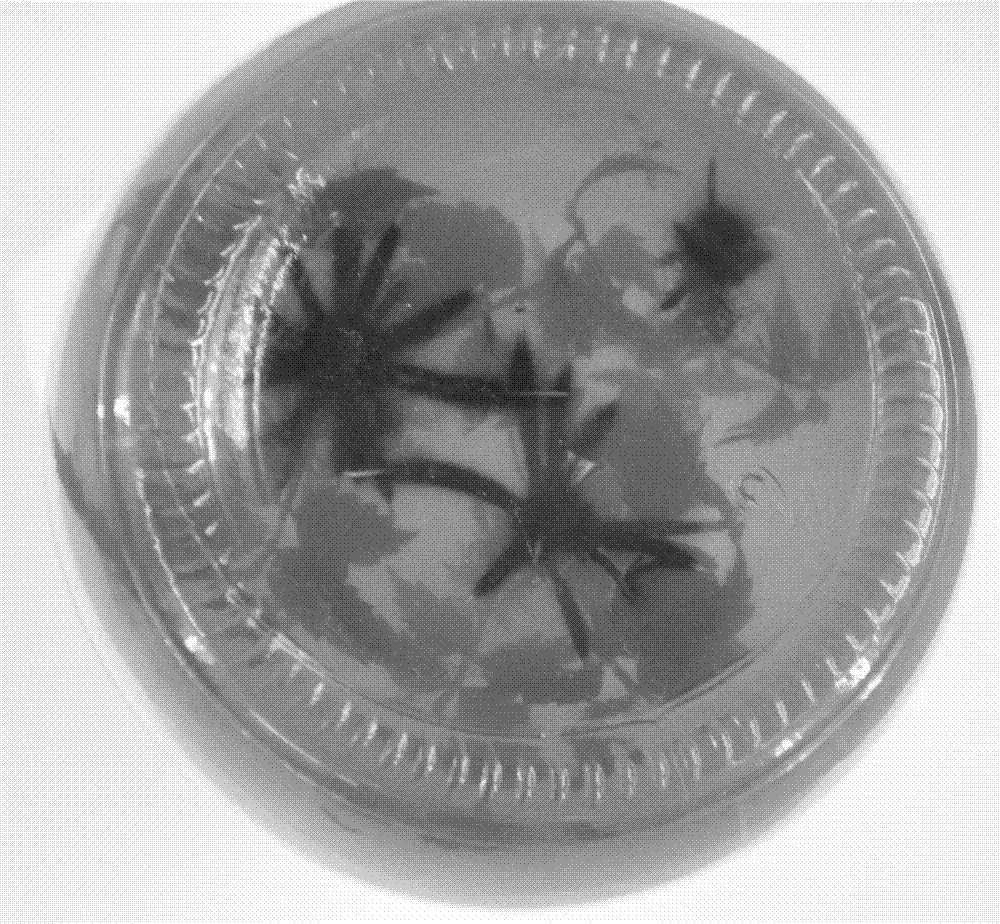Tissue culture and rapid propagation process of Chinese Pistache
A technology for tissue culture and rapid propagation of Pistacia chinensis, applied in horticulture, cultivation, soilless cultivation, etc., can solve the problems of easy pollution of stem segment tissue culture, difficulty in obtaining sterile seedlings, high browning rate, etc., and achieve reproductive efficiency Low, optimized medium formula, low chance of variation
- Summary
- Abstract
- Description
- Claims
- Application Information
AI Technical Summary
Problems solved by technology
Method used
Image
Examples
Embodiment 1
[0027] The process of tissue culture and rapid propagation of Pistacia chinensis includes the following steps:
[0028] A. Obtain aseptic seedlings. Collect mature seeds of Pistacia chinensis in the field, first digest them with 50% sulfuric acid for 12, then remove the testa; then sterilize with 60% alcohol for 4 minutes, sterilize with mercury for 15 minutes, and wash with sterile water for 5 minutes. Times; then use pliers to clamp the seed shell on the ultra-clean workbench, and inoculate the seeds on MS basic medium without any hormones. The MS medium does not add any plant growth regulators (plant hormones), Carry out 3d dark culture for 3-7 days, then light / dark culture for 16hr / 8hr, the temperature of the culture room is 25℃; Observation records, after 1 month, some seeds can be seen to germinate and grow into complete plants to obtain sterile seedlings;
[0029] B. Pistacia chinensis tissue culture and rapid propagation. Aseptic seedlings are used for tissue culture and ra...
Embodiment 2
[0037] The process of tissue culture and rapid propagation of Pistacia chinensis includes the following steps:
[0038] A. Obtain aseptic seedlings. Collect mature seeds of Pistacia chinensis in the field, first digest them with 70% sulfuric acid for 12, then remove the testa; then sterilize with 80% alcohol for 2 minutes, sterilize with mercury for 25 minutes, and wash with sterile water 6 Times; then use pliers to clamp the seed shell on the ultra-clean workbench, and inoculate the seeds on MS basic medium without any hormones. The MS medium does not add any plant growth regulators (plant hormones), Carry out 3d dark culture for 3-7 days, then light / dark culture for 16hr / 8hr, the temperature of the culture room is 28℃; observation records, after 2 months, some seeds can be seen to germinate and grow into complete plants to obtain sterile seedlings;
[0039] B. Pistacia chinensis tissue culture and rapid propagation. Aseptic seedlings are used for tissue culture and rapid propagat...
Embodiment 3
[0048] The process of tissue culture and rapid propagation of Pistacia chinensis includes the following steps:
[0049] A. Obtain aseptic seedlings. Collect mature seeds of Pistacia chinensis in the field, first digest them with 60% sulfuric acid for 18 hours, then remove the testa; then sterilize with 70% alcohol for 3 minutes, sterilize with mercury for 20 minutes, and wash with sterile water 5 Times; then use pliers to clamp the seed shell on the ultra-clean workbench, and inoculate the seeds on MS basic medium without any hormones. The MS medium does not add any plant growth regulators (plant hormones), Carry out 3d dark culture for 3-7 days, then light / dark culture for 16hr / 8hr, the temperature of the culture room is 26℃; Observation records, one and a half months later, some seeds can be seen to germinate and grow into complete plants, and sterile seedlings are obtained;
[0050] B. Pistacia chinensis tissue culture and rapid propagation. Aseptic seedlings are used for tissue...
PUM
 Login to View More
Login to View More Abstract
Description
Claims
Application Information
 Login to View More
Login to View More - R&D
- Intellectual Property
- Life Sciences
- Materials
- Tech Scout
- Unparalleled Data Quality
- Higher Quality Content
- 60% Fewer Hallucinations
Browse by: Latest US Patents, China's latest patents, Technical Efficacy Thesaurus, Application Domain, Technology Topic, Popular Technical Reports.
© 2025 PatSnap. All rights reserved.Legal|Privacy policy|Modern Slavery Act Transparency Statement|Sitemap|About US| Contact US: help@patsnap.com



